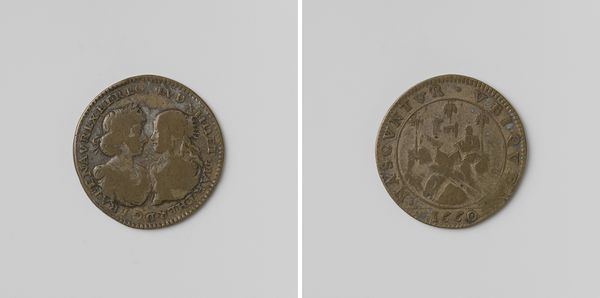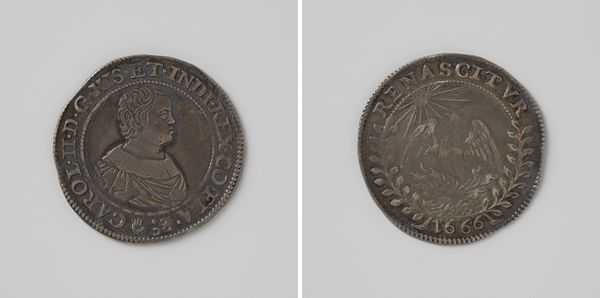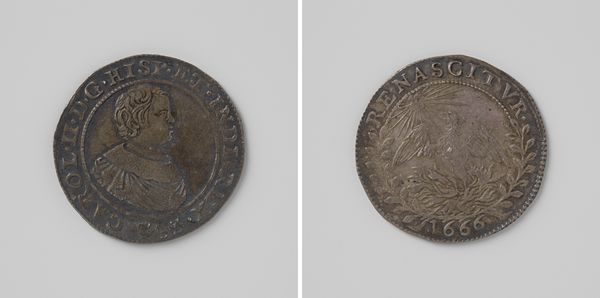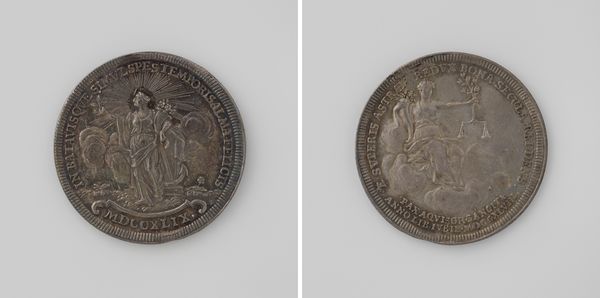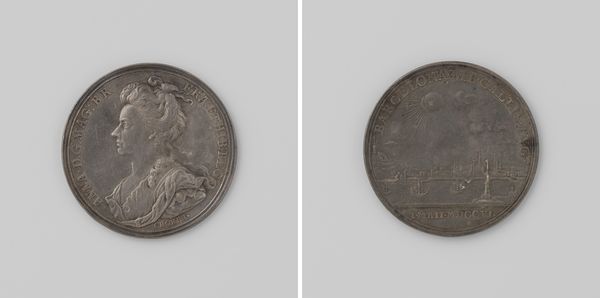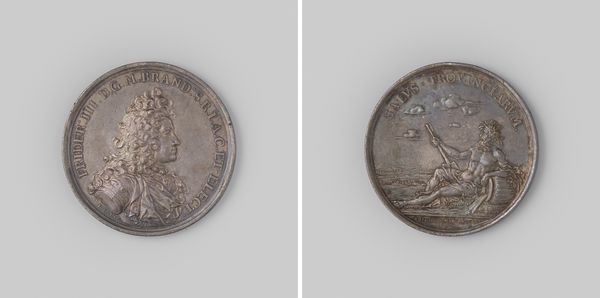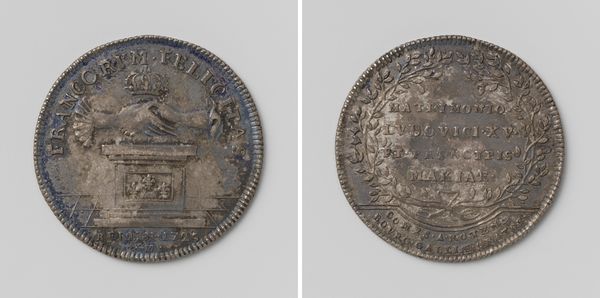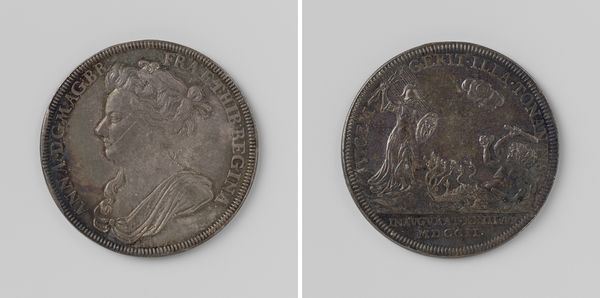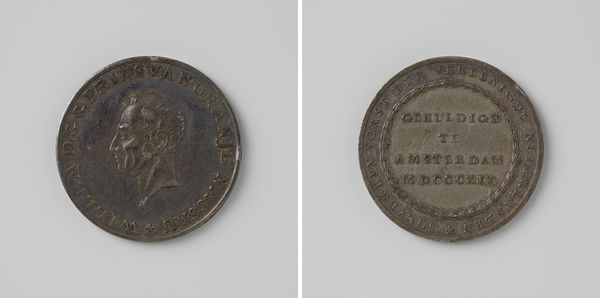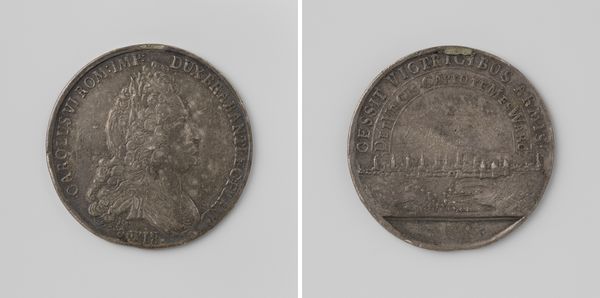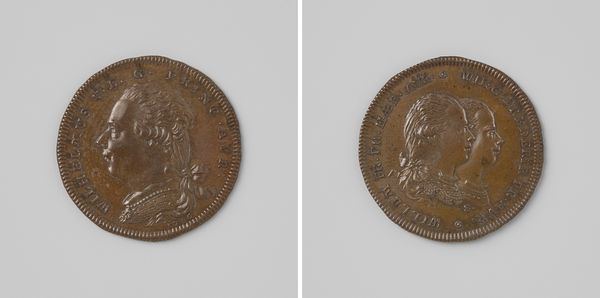
Inhuldiging van Frans II, Duits keizer, graaf van Vlaanderen en hertog van Brabant en Bourgondie te Brussel 1794
0:00
0:00
anonymous
Rijksmuseum
print, metal
#
portrait
#
neoclacissism
# print
#
metal
#
history-painting
Dimensions: diameter 2.1 cm, weight 3.36 gr
Copyright: Rijks Museum: Open Domain
Curator: Before us, we have a fascinating example of metal print art: a medal commemorating "The Inauguration of Francis II, German Emperor," and count of Flanders, Duke of Brabant and Burgundy in Brussels, dated 1794. It is housed at the Rijksmuseum. Editor: It strikes me as somber. The silver, the close crop on the ruler’s profile… There's an air of austerity that pervades the piece. Curator: I appreciate your immediate reaction. This artwork embraces neoclassicism, evident in the clean lines, balanced composition, and the subject itself— the Emperor, represented with the gravitas of a Roman leader. Note also the formal portraiture. Editor: But what was happening at the time this token of inauguration was cast? In 1794, Revolutionary France had declared war on Austria, and had occupied Belgium. In a time of radical socio-political upset across Europe, what did it mean to depict a classical portrait? How complicit were the producers in creating a legitimizing mythology around empire? Curator: An astute point. The artist presents Francis II, employing a precise visual language characteristic of Neoclassicism, as steadfast. But consider how the medium also informs our reading; metal carries connotations of durability, and therefore is perfectly aligned with the ruler's intention of self-portrayal as a force to be reckoned with. Editor: Absolutely. This metal engraving offers a glimpse into the relationship between the emperor and their region at a specific time. Even an image intended as a straightforward depiction cannot erase a troubled time in world history! The text is encircled by the olive branches--symbols of peace. Is this a symbol of the emperor offering an end to all struggles for power? Or is it there to cover something that remains unacknowledged? Curator: This engraving successfully demonstrates how classical artistic modes continued to exert their influence during a pivotal period of change. Its design is a complex visual object worthy of detailed contemplation. Editor: For me, examining artwork such as this opens a lens to view society, the narratives they promote, and those they may choose to erase, at important historical moments.
Comments
No comments
Be the first to comment and join the conversation on the ultimate creative platform.

